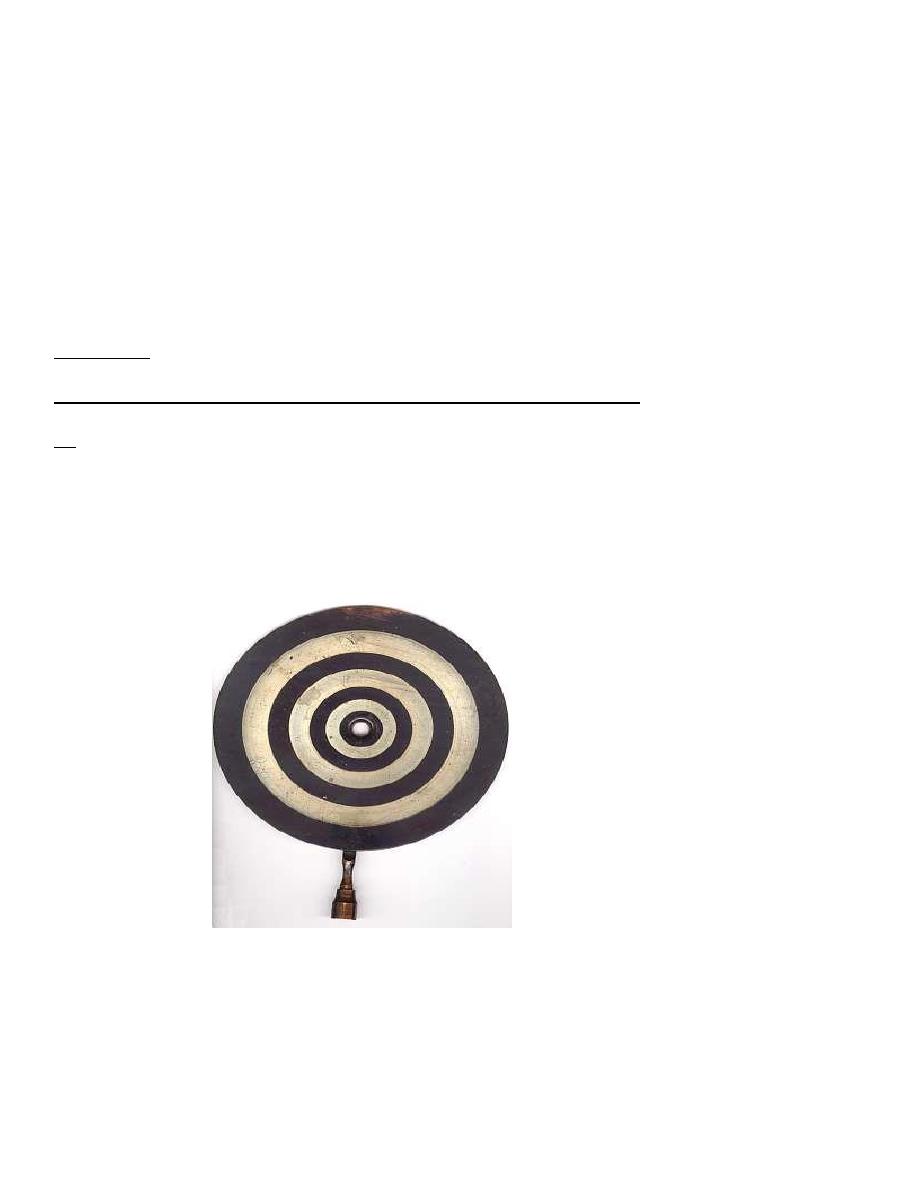
1
Fifth stage
Ophthalmology
Lec-2
د
.
ذاكر
22/11/2015
Conjunctiva, cornea and sclera
Symptoms
1 - Pain and irritation. Conjunctivitis causes mild discomfort. Pain is associated with
corneal injury or infection.
2 - Redness. In conjunctivitis the entire conjunctival surface including that covering the
tarsal plates is involved. If the redness is localized to the limbus (ciliary flush) the
following should be considered:
(a) keratitis (an inflammation of the cornea);
(b) uveitis;
(c) acute glaucoma.
3 - Discharge.
4 - Visual loss.
5- Patients with corneal disease may also complain of photophobia.
Signs
Conjunctiva
• Papillae. 1 mm
Giant papillae, found in allergic eye disease, are formed by the coalescence of papillae .
• Follicles, gelatinous, oval lesions about 1 mm in diameter found usually in the lower
tarsal conjunctiva and upper tarsal border, and occasionally at the limbus. Each follicle
represents a lymphoid collection with its own germinal centre.
Unlike papillae, the causes of follicles are more specific (e.g. viral and chlamydial infections).
• Dilation of the conjunctival vasculature (termed ‘injection’).
• Subconjunctival haemorrhage,

2
The features of corneal disease are different and include the following:
• Epithelial and stromal oedema may develop causing clouding of the cornea.
• Cellular infiltrate in the stroma causing focal granular white spots.
• Deposits of cells on the corneal endothelium (termed keratic precipitates or KPs, usually
lymphocytes or macrophages.
• Chronic keratitis may stimulate new blood vessels superficially, under the epithelium or
deeper in the stroma.
• Punctate Epithelial Erosions.
CONJUNCTIVA
Inflammatory diseases of the conjunctiva
BACTERIAL CONJUNCTIVITIS
Patients present with:
• redness of the eye;
• discharge;
• ocular irritation.
The commonest causative organisms are Staphylococcus, Streptococcus, Pneumococcus and
Haemophilus. The condition is usually self-limiting although a broad spectrum antibiotic eye
drop will hasten resolution. Conjunctival swabs for culture are indicated if the condition fails
to resolve.
ANTIBIOTICS
Chloramphenicol Ciprofloxacin Fusidic acid Gentamicin Neomycin Ofloxacin Tetracycline

3
Ophthalmia neonatorum
any conjunctivitis in the first 28 days of neonatal life, Swabs for culture are mandatory. It is
also important that the cornea is examined to exclude any ulceration.
The commonest organisms are:
• Bacterial conjunctivitis (usually Gram positive).
• Neisseria gonorrhoea. In severe cases this can cause corneal perforation. Penicillin
given topically and systemically is used to treat the local and systemic disease
respectively.
• Herpes simplex, which can cause corneal scarring.Topical antivirals are used to treat the
condition.
• Chlamydia. This may be responsible for a chronic conjunctivitis and cause sight-
threatening corneal scarring.Topical tetracycline ointment and systemic erythromycin is
used is used to treat the local and systemic disease respectively.
VIRAL CONJUNCTIVITIS
This is distinguished from bacterial conjunctivitis by:
• a watery and limited purulent discharge;
• the presence of conjunctival follicles and enlarged pre-auricular lymph nodes;
• there may also be lid oedema and excessive lacrimation.
adenovirus
Coxsackie
picornavirus.
Adenoviruses can also cause a conjunctivitis associated with the formation of a
pseudomembrane across the conjunctiva.
punctate keratitis.
Treatment

4
CHLAMYDIAL INFECTIONS
Different serotypes of the obligate intracellular organism Chlamydia trachomatis are
responsible for two forms of ocular infections.
Inclusion keratoconjunctivitis
This is a sexually transmitted disease and may take a chronic course (up to 18 months) unless
adequately treated.
muco- purulent follicular conjunctivitis
micropannus and sub- epithelial scarring.
Urethritis or cervicitis is common.
Diagnosis
chlamydial antigens, using immunofluorescence, or by identification of typical inclusion
bodies by Giemsa staining in conjunctival swab or scrape specimen
treated with topical and systemic tetracycline.
Trachoma
the commonest infective cause of blindness in the world.The housefly acts as a vector and the
disease is encouraged by poor hygiene and overcrowding in a dry, hot climate.
subconjunctival fibrosis caused by frequent re-infections associated with the unhygienic
conditions.
Blindness may occur due to corneal scarring from recurrent keratitis and trichiasis.
treated with oral or topical tetracycline or erythromycin. Azithromycin, an alternative,
requires only one application. Entropion and trichiasis require surgical correction.
ALLERGIC CONJUNCTIVITIS
This may be divided into acute and chronic forms:
1 - Acute (hay fever conjunctivitis). This is an acute IgE-mediated reaction to airborne
allergens (usually pollens). Symptoms and signs include:

5
(a) itchiness;
(b) conjunctival injection and swelling (chemosis);
(c) lacrimation.
2- Vernal conjunctivitis (spring catarrh) is also mediated by IgE. It
often affects male children with a history of atopy. It may be
present all year long.
Symptoms and signs include:
(a) itchiness;
(b) photophobia;
(c) lacrimation;
(d) papillary conjunctivitis on the upper tarsal plate (papillae may coalesce to form giant
cobblestones; Fig. 7.4);
(e) limbal follicles and white spots;
(f) ) punctate lesions on the corneal epithelium;
(g) an opaque, oval plaque which in severe disease replaces an upper zone of the corneal
epithelium.
Treatment
Initial therapy is with antihistamines and mast cell stabilizers (e.g. sodium cromoglycate;
nedocromil; lodoxamide).
Topical steroids
Contact lens wearers may develop an allergic reaction to their lenses or to lens cleaning
materials leading to a giant papillary conjunctivitis (GPC) with a mucoid discharge.

6
Conjunctival degenerations
Pingueculae and pterygia are found on the interpalpebral bulbar conjunctiva.
Due to reflected or direct ultraviolet component of sunlight. Histologically the collagen
structure is altered.
Pingueculae are yellowish lesions that never impinge on the cornea.
Pterygia are wing shaped and located nasally,
CONJUNCTIVAL TUMOURS
These are rare. They include:
• Squamous cell carcinoma. An irregular raised area of conjunctiva which may invade the
deeper tissues.
• Malignant melanoma. The differential diagnosis from benign pigmented lesions (for
example a naevus) may be difficult. Review is necessary to assess whether the lesion is
increasing in size. Biopsy, to achieve a definitive diagnosis, may be required.
CORNEA
Infective corneal lesions
HERPES SIMPLEX KERATITIS
Type 1 herpes simplex (HSV) is a common and important cause of ocular disease. Type 2
which causes genital disease may occasionally cause keratitis and infantile chorioretinitis.
Primary infection by HSV1 is usually acquired early in life by close contact such as kissing. It is
accompanied by:
• fever;
• vesicular lid lesions;

7
• follicular conjunctivitis;
• pre-auricular lymphadenopathy;
• most are asymptomatic.
• The cornea may not be involved although punctate epithelial damage may be seen.
• Recurrent infection
• dendritic ulcers on the cornea. heal without a scar.
• If the stroma is also involved oedema develops causing a loss of corneal
• transparency.
• Involvement of the stroma may lead to permanent scarring.
• Uveitis and glaucoma may accompany the disease.
• Disciform keratitis is an immunogenic reaction to herpes antigen in the stroma and
presents as stromal clouding without ulceration, often associated with iritis.
• Dendritic lesions are treated with topical antivirals which typically heal within 2 weeks.
• Topical steroids
HERPES ZOSTER OPHTHALMICUS (OPHTHALMIC SHINGLES)
varicella-zoster virus which is responsible for chickenpox. The ophthalmic division of the
trigeminal nerve is affected.
a prodromal period with the patient systemically unwell.
Ocular manifestations are usually preceded by the appearance of vesicles in the distribution of
the ophthalmic division of the trigeminal nerve. Ocular problems are more likely if the naso-
ciliary branch of the nerve is involved (vesicles at the root of the nose).
Signs
include
:

8
• lid swelling (which may be bilateral);
• keratitis;
• iritis;
• secondary glaucoma.
Reactivation of the disease is often linked to unrelated systemic illness.
Oral antiviral treatment (e.g. aciclovir and famciclovir) is effective in reducing post-
infective neuralgia if given within 3 days of the skin vesicles erupting.
Ocular disease may require treatment with topical antivirals and steroids.
Both simplex and zoster cause anaesthesia of the cornea. Non-healing indolent ulcers may
be seen following simplex infection and are difficult to treat.
BACTERIAL KERATITIS
Pathogenesis
• A host of bacteria may infect the cornea.
• Staphylococcus epidermidis
• Staphylococcus aureus
• Streptococcus pneumoniae
• Coliforms
• Pseudomonas
• Haemophilus
Some are found on the lid margin as part of the normal flora. The conjunctiva and cornea are
protected against infection by:
• blinking;
• washing away of debris by the flow of tears;
• entrapment of foreign particles by mucus;

9
• the antibacterial properties of the tears;
• the barrier function of the corneal epithelium (Neisseria gonnorrhoea is the only
organism that can penetrate the intact epithelium).
Predisposing causes of bacterial keratitis include:
• keratoconjunctivitis sicca (dry eye);
• a breach in the corneal epithelium (e.g. following trauma);
• contact lens wear;
• prolonged use of topical steroids.
Symptoms and signs
These include:
• pain, usually severe unless the cornea is anaesthetic;
• purulent discharge;
• ciliary injection;
• visual impairment (severe if the visual axis is involved);
• hypopyon sometimes (a mass of white cells collected in the anterior chamber
• a white corneal opacity which can often be seen with the naked eye.
Treatment
• Scrapes for Gram staining and culture.
• intensive topical antibiotics often with dual therapy (e.g. cefuroxime against Gram +ve
bacteria and gentamicin for Gram —ve bacteria).
• The use of fluoro- quinolones (e.g. Ciprofloxacin, Ofloxacin) as a monotherapy.
• The drops are given hourly day and night for the first couple of days and reduced in
frequency as clinical improvement occurs.
• In severe or unresponsive disease the cornea may perforate. This can be treated
initially with tissue adhesives (cyano-acrylate glue) and a subsequent corneal graft.

10
• A persistent scar may also require a corneal graft to restore vision.
ACANTHAMOEBA KERATITIS
• freshwater amoeba .
• soft contact lenses.
• A painful keratitis with prominence of the corneal nerves results. The amoeba can be
isolated from the cornea (and from the contact lens case) with a scrape and cultured on
special plates impregnated with Escherichia coli.
• Topical chlorhexidine, polyhexamethylene biguanide (PHMB) and propamidine are used
to treat the condition.
FUNGAL KERATITIS
more common in warmer climates. It should be considered in:
• lack of response to antibacterial therapy in corneal ulceration;
• cases of trauma with vegetable matter;
• cases associated with the prolonged use of steroids.
The corneal opacity appears fluffy and satellite lesions may be present. Liquid and solid
Sabaroud’s media are used to grow the fungi. Incubation may need to be prolonged.
Treatment requires topical antifungal drops such as pimaricin 5%.
INTERSTITIAL KERATITIS
This term is used for any keratitis that affects the corneal stroma without epithelial
involvement. Classically the most common cause was syphillis, leaving a mid stromal scar with
the outline (‘ghost’) of blood vessels seen. Corneal grafting may be required when the opacity
is marked and visual acuity reduced.

11
Corneal dystrophies
These are rare inherited disorders. They affect different layers of the cornea and often affect
corneal transparency. They may be divided into:
• Anterior dystrophies involving the epithelium. These may present with recurrent
corneal erosion.
• Stromal dystrophies presenting with visual loss. If very anterior they may cause corneal
erosion and pain.
• Posterior dystrophies which affect the endothelium and cause gradual loss of vision due
to oedema. They may also cause pain due to epithelial erosion.
Disorders of shape
Keratoconus
: Progressive coning of cornea due to thinning of inf. Paracentral stroma.
Usually bilateral but may be asymmetrical
Start in teens age (puberty), more in females.
Associations:
1. Vernal catarrh
2. Atopic dermatitis
3. Down syndrome
4. Turner syndrome
5. Marfan syndrome 6. Ehler Danlos Syndrome
Present: Progressive blurring of vision (irregular myopic astigmatism & corneal opacities).
O/E:
1- Thinning & forward bowing of inf. Paracentral cornea stroma (slit lamp ex.)
2- Brownish ring (Fleischer) around the base of cone due to hemosiderin deposit.

12
3- Distortion of the corneal light reflection (placido disc).
4- Altered ophthalmoscopic & retinoscopic light reflexes.
5- Munson’s sign (indentation of the lower lid by the conical cornea when patient looks
downward).
6- Acute hydrops=stromal oedema due to rupture descemet membrane.
Nowadays ,it is mostly diagnosed by corneal topography examination during the pre-oprative
assessment of refractive surgery
Treatment:
1- Corneal Collagen Cross-linking, in early cases to arrest the disease
2- Glasses
3- Contact lenses (Rigid)
4- Intra-stromal corneal rings
5- Penetrating keratoplasty or Lamellar keratoplasty..in advanced cases or corneal scarring
Placido disc
Central corneal degenerations

13
BAND KERATOPATHY
the subepithelial deposition of calcium phosphate in the exposed part of the cornea. It is seen
in eyes with chronic uveitis or glaucoma. It can also be a sign of systemic hypercalcaemia as in
hyperparathyroidism or renal failure. and may cause visual loss or discomfort if epithelial
erosions form over the band. If symptomatic it can be scraped off aided by a chelating agent
such as sodium edetate.The excimer laser can also be effective in treating these patients by
ablating the affected cornea.
Peripheral corneal degenerations
CORNEAL THINNING
A rare cause of painful peripheral corneal thinning is Mooren’s ulcer, a condition with an
immune basis.
Corneal thinning or melting can also be seen in collagen diseases such as rheumatoid arthritis
and Wegener’s granulomatosis. Treatment can be difficult and both sets of disorder require
systemic and topical immunosuppression. Where there is an associated dry eye it is important
to ensure adequate corneal wetting and corneal protection.
LIPID ARCUS
This is a peripheral white ring-shaped lipid deposit, separated from the limbus by a clear
interval. It is most often seen in normal elderly people (arcus senilis) but in young patients it
may be a sign of hyperlipidaemia. No treatment is required.
Corneal grafting
Donor corneal tissue can be grafted into a host cornea to restore corneal clarity or repair a
perforation. Donor corneae can be stored and are banked so that corneal grafts can be
performed on routine operating lists. The avascular host cornea provides an immune
privileged site for grafting,
with a high success rate. Tissue can be HLA-typed for grafting of vascularized corneae at high
risk of immune rejection although the value of this is still uncertain. The patient uses steroid
eye drops for some time after the operation to prevent graft rejection. Complications such as
astigmatism can be dealt with surgically or by suture adjustment.

14
GRAFT REJECTION
Any patient who has had a corneal graft and who complains of redness, pain or visual loss
must be seen urgently by an eye specialist, as this may indicate graft rejection. Examination
shows graft oedema, iritis and a line of activated T-cells attacking the graft endothelium.
Intensive topical steroid application in the early stages can restore graft clarity.
SCLERA
EPISCLERITIS
This inflammation of the superficial layer of the sclera causes mild discomfort. It is rarely
associated with systemic disease. It is usually self-limiting but as symptoms are tiresome,
topical anti-inflammatory treatment can be given. In rare, severe disease, systemic non-
steroidal anti-inflammatory treatment may be helpful.
SCLERITIS
more severe condition than episcleritis
may be associated with the collagen-vascular diseases, most commonly rheumatoid arthritis.
It is a cause of intense ocular pain. Both inflammatory areas and ischaemic areas of the sclera
may occur. Characteristically the affected sclera is swollen. The following may complicate the
condition:
• scleral thinning (scleromalacia), sometimes with perforation;
• keratitis;
• uveitis;
• cataract formation;
• glaucoma.
Treatment may require high doses of systemic steroids or in severe cases cytotoxic therapy
and investigation to find any associated systemic disease.
Scleritis affecting the posterior part of the globe may cause choroidal effusions or simulate a
tumour.
